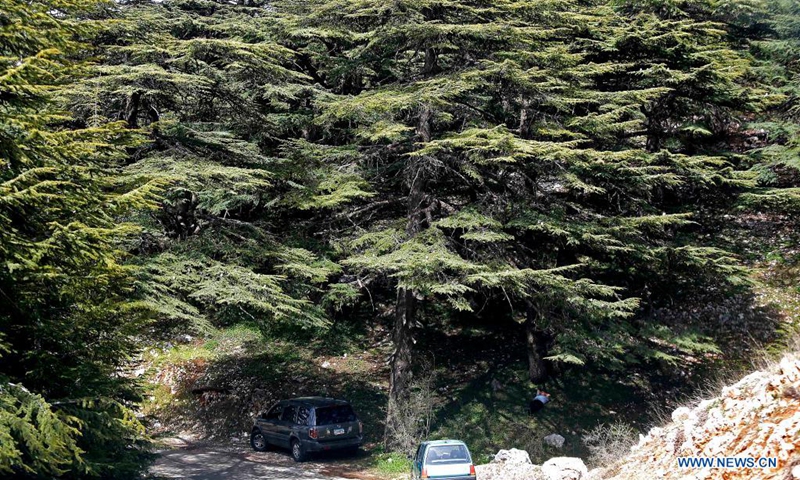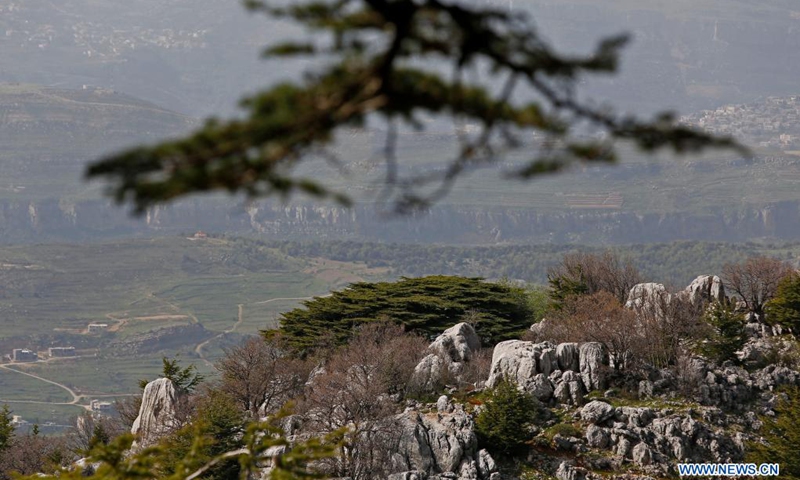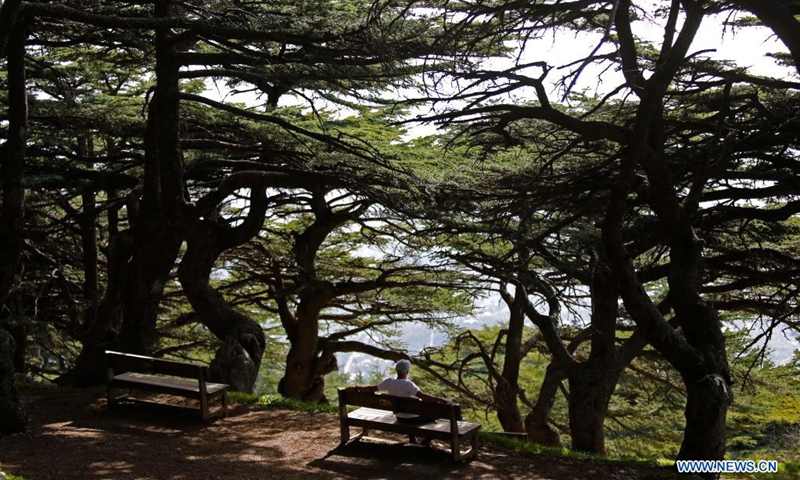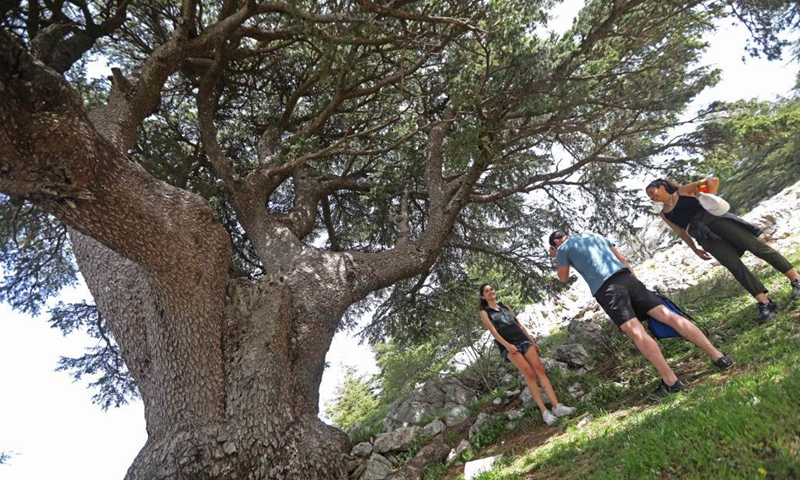
People visit the Barouk cedar forest in Lebanon, on April 18, 2021. The Lebanese have always taken pride in their cedar tree, or Cedrus libani, which presents in the middle of their national flag. However, the current situation of the national tree is worrying as the remnants cover only 3 percent of the country, or 17 square kilometers.(Photo: Xinhua)

Photo taken on April 18, 2021 shows cedar tree in Maaser El Shouf forest, Lebanon. The Lebanese have always taken pride in their cedar tree, or Cedrus libani, which presents in the middle of their national flag. However, the current situation of the national tree is worrying as the remnants cover only 3 percent of the country, or 17 square kilometers.(Photo: Xinhua)

A man rests under cedar trees in Maaser El Shouf forest, Lebanon, on April 18, 2021. The Lebanese have always taken pride in their cedar tree, or Cedrus libani, which presents in the middle of their national flag. However, the current situation of the national tree is worrying as the remnants cover only 3 percent of the country, or 17 square kilometers.(Photo: Xinhua)

People visit the Barouk cedar forest in Lebanon, on April 18, 2021. The Lebanese have always taken pride in their cedar tree, or Cedrus libani, which presents in the middle of their national flag. However, the current situation of the national tree is worrying as the remnants cover only 3 percent of the country, or 17 square kilometers.(Photo: Xinhua)
The Lebanese have always taken pride in their cedar tree, or Cedrus libani, which presents in the middle of their national flag. However, the current situation of the national tree is worrying as the remnants cover only 3 percent of the country, or 17 square kilometers.
Alain Daou, director of the Nature Conservation Center at the American University of Beirut (AUB), told Xinhua that intensive sheep and goats grazing, as well as climate change affect the cedars' living conditions in Lebanon.
Daou said that cedar forests only in the northern part of the country are likely to survive the stress of climate change, suggesting preserving these forests by implanting them to higher altitudes for favorable temperature and moisture.
Samer Khawand, an agricultural expert at Lebanon's Ministry of Agriculture, told Xinhua that preserving cedar trees requires joint efforts by authorities and the society.
"It is best to use drones to spread cedar tree seeds on snow directly, providing them with the coldness they need to grow," said Khawand.
Today, the biggest cedar forest is in Shouf reserve, comprising 20 percent of Lebanon's total.
Some cedar forests are considered as part of nature reserves like in Barouk, Maaser El Shouf, Niha, Ehden, and Tannourine, while cedar trees in Qammouaa are listed as a protected natural site, and as protected forests in Jaj, Sir El Dinniyeh, and Sweisse.
Khawand said that Maaser el Shouf has, in fact, witnessed a partnership with the local community in managing the forest.
Meanwhile, Daou emphasized the efforts made by local guards and workers in the Tannourine reserve where cedars have been considered as endangered species since 1998.
However, he noted the need to involve citizens further in the reforestation. "Lebanese authorities should also create economic incentives for the citizens who live around the reserves to protect cedar trees."
Lebanese authorities have, on the other hand, launched several initiatives to protect the nation's wealth. The most important measure is declaring cedar forests as nature reserves or protected forests, with a management committee in cooperation with the Lebanon Ministry of Environment.
Moreover, the symbolic and cultural value of cedar trees encouraged national efforts to seek several external funds for the conservation, according to AUB's Nature Conservation Center.
The Ministry of Environment in Lebanon launched in 2004 a national project entitled "Integrated Management of Cedar Forests in Lebanon in Cooperation with other Mediterranean Countries" to contribute to the management of cedar forests and the protection from serious insect pests.
Also, more than 600,000 cedar trees have been planted in Lebanon since 2011 with the help of the ministries of Environment and Agriculture, local NGOs, and in-country scientific institutions.
Furthermore, Lebanon's Agriculture Ministry, in collaboration with the Food and Agriculture Organization, announced a new reforestation plan in 2014 to plant 40 million trees in the country with around 12 million trees being planted so far.
